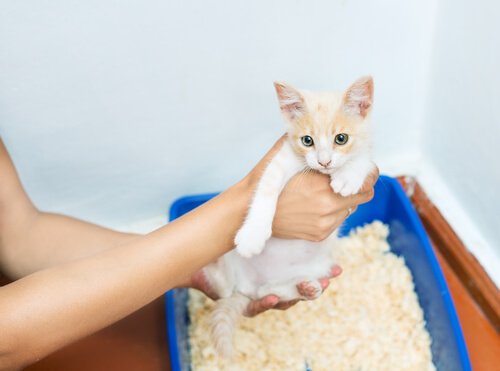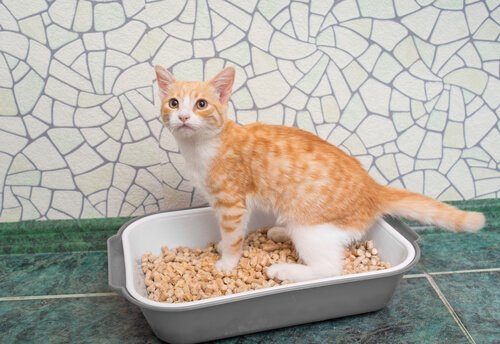How to Make a Cat Litter Box


Written and verified by the lawyer Francisco María García
Generally, it won’t take more than a few days to train a cat where they should do their business. We’ll save a lot more time cleaning if we always keep the cat litter box clean.
The first steps to doing their business at home
Kittens are very particular with their toilet needs. If their homemade cat litter box isn’t clean, they’ll most likely do it elsewhere in the house.
To save time and money, you can make your own mix of cat litter. This is a great idea because you won’t have to buy big bags of it –and you won’t have to carry it from one location to another.
Keep in mind that most commercial cat litter bags have chemicals that pollute the environment. If you want to be as environmentally-friendly as possible, then go straight to nature and take advantage of what it provides.
As you can see, besides saving you money, a homemade cat litter box weighs a lot less. This is because it’s a lot easier to fill the tray without you having to exert so much effort.
There are several ways to make homemade cat litter with products that aren’t necessarily made for cats, and also making it ourselves.

Advantages and disadvantages
- Typical homemade cat litter is heavy, and it’s also the one that most resembles what is sold at specialized stores. It doesn’t clump much so you just have to keep an eye on the tray to make sure it’s clean.
- Regular sand serves the same purpose and it’s the most economical option.
- Sawdust is light and is a naturally absorbent, antibacterial material. Cats like it a lot. Note that if you choose this option then get the thick kind as it absorbs urine a lot better.
- Sand mixed with baking soda is pretty self-descriptive. Place the baking soda at the base of the tray and then top it up with sand.
- Another option is the homemade cat litter mix. To make one, mix regular sand with bread crumbs, in a proportion of 10 lbs of sand per 4 lbs of bread crumbs. The result of this clumping sand is very pleasant to the touch, and it’s also simpler to clean the feces without using too much sand. If you don’t have bread crumbs, then make some. Cut old bread into pieces and blend them in a food processor. You could also grate it by hand.
Homemade cat litter boxes for large animals
Even though small cat litter boxes are appropriate for small kittens, they have to get bigger as the cats grow up. That means you have to replace the litter box and train the cat all over again, that is. That’s why it’s best to select one that will last a long time right from the start.
Certain cat litter boxes have an outer top cover that surrounds them. This type of enclosed box keeps curious kittens, who like to kick and dig, out of the cat WC. Furthermore, it also reduces odors in small, enclosed rooms.
Advice on the cat litter box

As we previously mentioned, the cat litter box must be large enough, because cats need a place to comfortably circle around inside. Most cats need to be able to sniff their solid waste and then bury it. That’s why there must be plenty of space inside the box to do so.
Going back to the enclosed litter boxes, some felines don’t like them at the start. If that’s the case with your cat, you can facilitate the transition by removing the revolving door until they start using it.
Make a cat litter box at home
This natural option can be created with different materials. The most basic ones are:
- Baking soda and sand
- A good biodegradable detergent
- A colander
- Paper shredder or tools to shred paper
- Old newspapers, and a large container
Good gloves would be an advantage too. Good luck making it!
This text is provided for informational purposes only and does not replace consultation with a professional. If in doubt, consult your specialist.